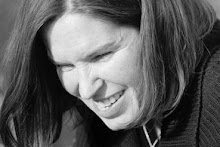

I was asked by someone how I made my books that are on display now at Frank Bette Center for the Arts. I was very touched by the inquiry and it made me smile because I saw myself in the questioner. I love asking about process, how someone does something… that's what interests me.
I realize I have so many people to thank for my own process and so I thought here would be a good place to share my process and to acknowledge other artists who have helped me get to the point where I am now. To start, San Francisco Center for the Book has some amazing bookmaking workshops and instructors. I've taken several bookmaking classes with Victoria Dunkak Heifner who was really great and inspiring. I didn't even mention their letterpress instruction, that is great as well.
For these books in particular, I came across Teesha Moore's site and her instructions on how to make your own journal. I thought her description on her own creative process was very informative. Per her suggestion, I used canvas boards. These can be found at a local art supply and are nice because they generally can take a lot of glue and water and don't warp.
I first did a Polaroid emulsion lift process with the photos I took during the Alameda on Camera weekend. I took some of the slides I had shot and printed them onto Polaroid 669 film with a Vivitar slide printer. You can find these on ebay or craigslist, etc. or you can purchase a Daylab printer. I heated water in a microwave up to 160˚ measuring it with a meat thermometer. The photos soaked for four minutes. I removed the emulsion from the paper backing, placed the canvas board under the water and moved the photo with a paint brush on top of the canvas board. This film on You Tube is a great visual. Plus, there are some written instructions in Jason Thompson's very inspiring Making Journals by Hand: 20 Creative Projects for Keeping Your Thoughts. I let the canvas boards dry outdoors in the sun.
Next, I pasted ripped paper around the photographs. Generally, I cover the entire canvas, this was something that Nick Bantock pointed out in a class I took from him. In order to get over the fear of the blank page, it's helpful to cover it quickly. That has worked for me, it gives me a goal. Working quickly is helpful too, you don't want to think too much. Generally, I don't have a specific idea of what the piece will look like when it's done. I try not to get attached to the different phases it becomes. After the paper is dry, I paint it with watercolors. I actually apply droplets of Dr. Ph. Martin's Radiant Concentrated Water Color on the piece. My grandmother gave these to me. The colors are really vibrant and beautiful. My friend Maria told me about Tsukineko Walnut Ink that I like to spray on as well. I like to use Java and Walnut Ink. These colors soak into the lighter colors of paper and give a more connected look to the piece. This is something I also learned from Nick Bantock: when you add paint to collage or glued paper, it ends up being more of a painting and a more cohesive piece. In the Padlock Book I created, I also used some pastels, oil and chalk. I picked colors based on ones I saw in the photographs and colors that intuitively spoke to me. Towards the end, I flicked gold and brown acrylic paint on the canvas and after that dried, I sealed it with a matte medium varnish or a gloss varnish.
After a thorough drying, I glued bookbinding cloth to the two canvas boards in the process that Teesha Moore describes. The cloth needs to dry overnight at least. If there are certain areas of the bookcloth that are not staying down, you can add more glue under the cloth, put wax paper on top and then put a weight on top. After a thorough drying, you can paint the bookcloth. This is helpful to cover any glue areas you might have and you can paint the interior of the canvas boards as well. You can also apply paper to the interior canvas boards and paint on top of that if you like.
For these particular books, I didn't want to use watercolor paper for the inside pages, instead I used Mohawk Superfine 28lb. Softwhite writing from Kelly Paper. I folded 8 sections of 8 pages each (with the grain direction), and cut them 1/2" shorter on the height (head to tail) of the books and 1/4" shorter on the width (foredge to spine). I used a professional guillotine cutter at work but there are some printers that will cut paper for you or you can cut it at SFCB.
At this point, I did some solvent transfers on the inside pages. You can read about this in Jason Thompson's Making Journals by Hand: 20 Creative Projects for Keeping Your Thoughts. The solvent is nasty so please wear a mask and try not to breathe it. One tip would be to put your image on the bottom and your paper on top, apply the solvent and burnish the paper where the resulting image will appear, rather than your transfer image. Another tip is, if you would like your image to be the way you see it, photocopy it with the mirror setting so that the image doesn't end up backwards.
I love exposed bindings and Keith A. Smith's Volume 1 Non-Adhesive Binding Books without Paste or Glue is a wonderful place to learn. I picked the Long Stitch/Link Stitch binding from this book. When finished sewing, (thanks to Tom's suggestion) I squared up the book by hitting the spine against my table so the book closes correctly.


1 comment:
You're cool!
Post a Comment